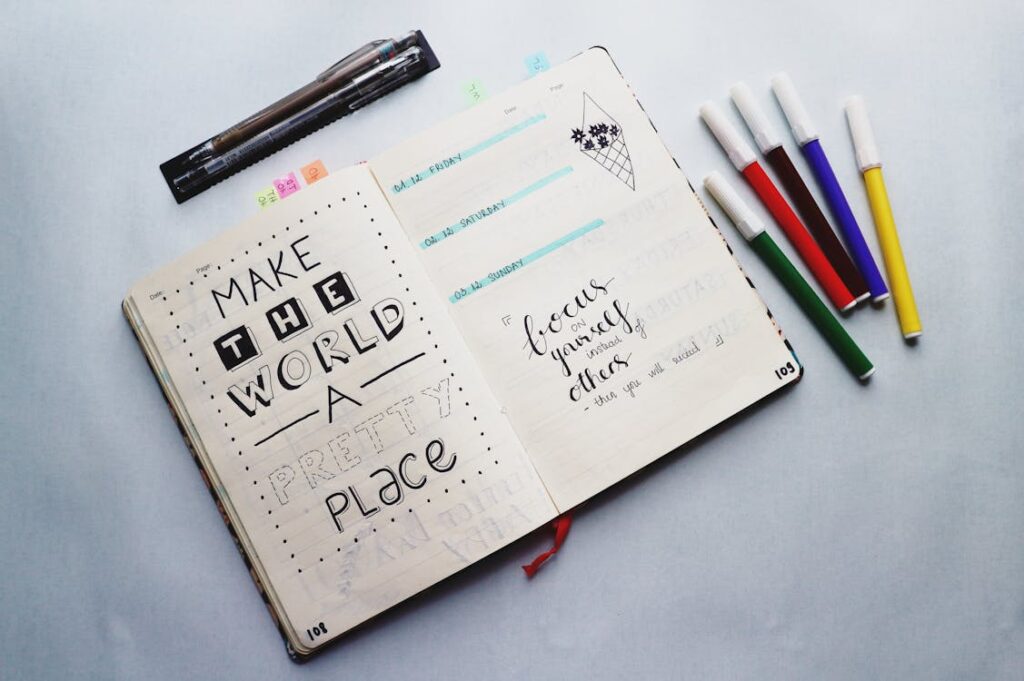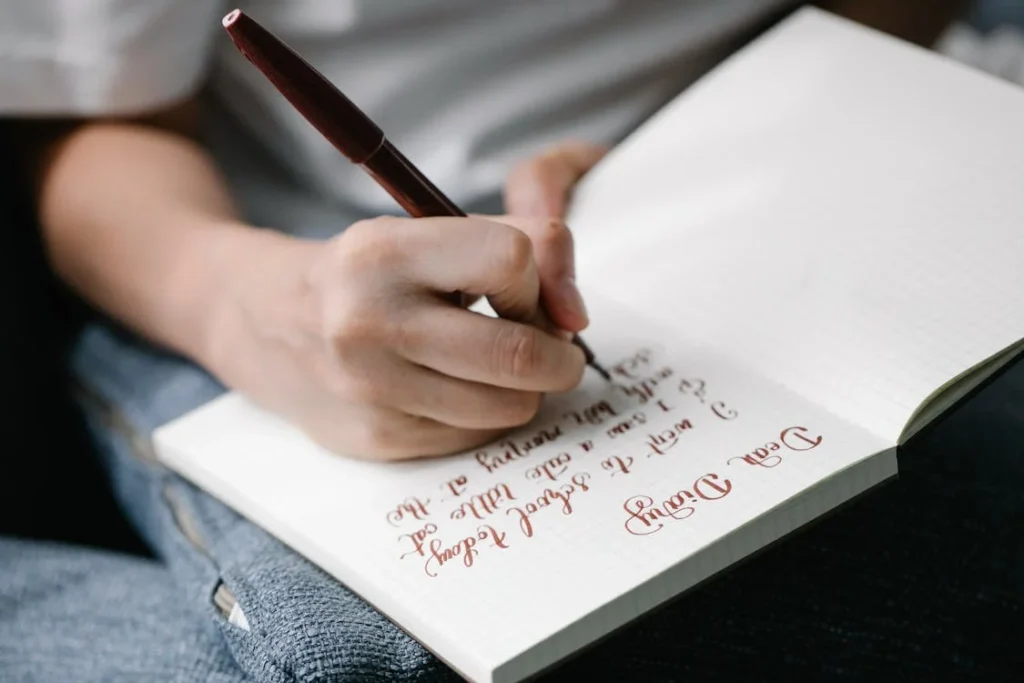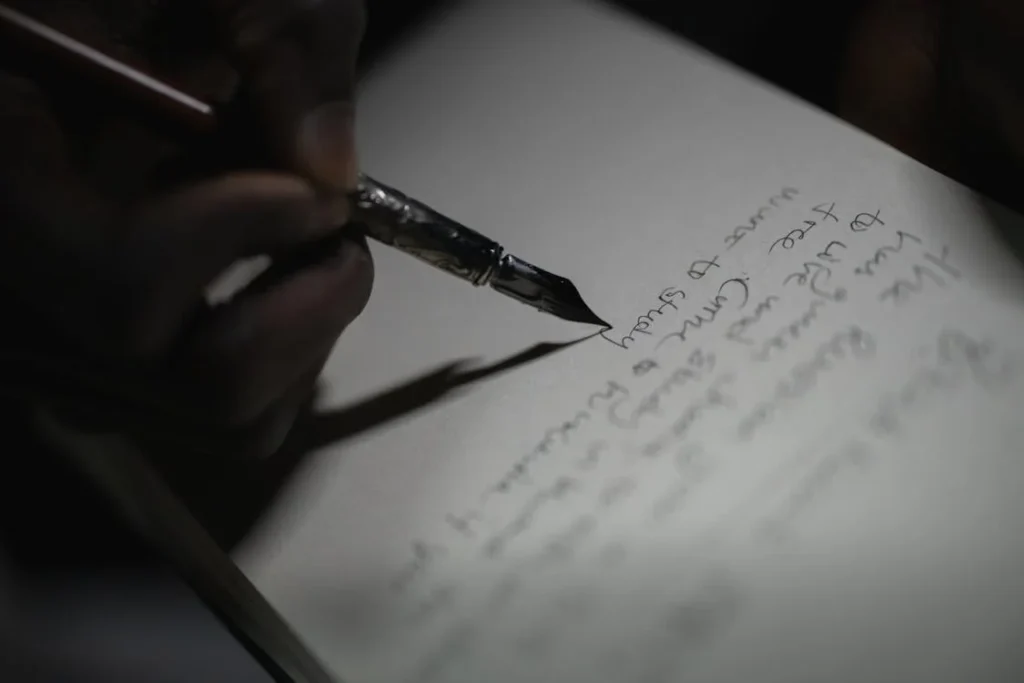Losing a limb is a life-changing experience that affects not only the body but also the mind. It brings a wave of emotions—grief, frustration, sadness, and even moments of hope. Processing these feelings can be overwhelming, and talking about them may not always be easy. This is where journaling can help.
Writing down your thoughts is a powerful way to express emotions, release stress, and gain clarity. It creates a space where you can be honest with yourself without fear of judgment. Whether you are struggling with acceptance, finding new confidence, or simply looking for a way to track your progress, journaling can be a valuable tool in your emotional recovery.

The Power of Journaling in Emotional Healing
Journaling is more than just writing words on a page—it is a way to process emotions, understand thoughts, and track personal growth. After losing a limb, emotions can feel unpredictable.
Some days may be filled with confidence and progress, while others bring frustration, sadness, or doubt. Writing about these emotions can help bring a sense of order to the chaos, making it easier to navigate the ups and downs of recovery.
Understanding Your Emotions Through Writing
Limb loss is not just a physical change; it is an emotional journey that affects identity, self-perception, and confidence. Keeping emotions bottled up can make healing more difficult.
Journaling provides a safe space to release feelings without judgment. Instead of letting sadness or frustration build up, writing allows you to acknowledge and process these emotions in a healthy way.
When you put your thoughts on paper, you begin to see patterns in your emotions. Maybe certain situations make you feel more self-conscious, or certain times of the day are harder to get through.
By identifying these patterns, you can work on finding solutions, building resilience, and gaining a clearer understanding of your healing process.
Turning Negative Thoughts Into Positive Growth
After limb loss, it is natural to have moments of doubt or self-criticism. Thoughts like I can’t do things the way I used to or People see me differently now can creep in and take control of your mindset.
Journaling helps you challenge these thoughts. Instead of letting negativity consume you, writing gives you the chance to respond with self-compassion and encouragement.
For example, if you write about a difficult day, you can also take a moment to remind yourself of the progress you have made. Even small victories, like getting out of bed on a tough day or learning how to use a prosthetic, deserve recognition.
Over time, this practice helps shift your mindset from frustration to resilience. It allows you to see that healing is not about perfection—it is about persistence.
Journaling as a Tool for Self-Reflection
One of the most valuable aspects of journaling is self-reflection. Looking back at past entries can reveal just how far you have come. What once felt like an impossible challenge may now feel like just another step in the journey. This perspective can be incredibly empowering.
Self-reflection also helps with decision-making. Writing about daily struggles, fears, and uncertainties can bring clarity to situations that feel confusing.
If you are debating whether to try a new activity, open up about your feelings to someone, or take a new step in your recovery, journaling can help you work through these thoughts and gain confidence in your choices.

How to Start Journaling for Emotional Healing
Starting a journal may feel unfamiliar at first, but the beauty of this practice is that there are no rules. You don’t need to be a skilled writer, and your entries don’t have to be perfect.
The most important thing is to create a space where you can freely express your emotions and thoughts. Writing, even for just a few minutes each day, can bring clarity and comfort as you navigate life after limb loss.
Choosing a Journaling Method That Feels Right
Journaling is a personal practice, and different methods work for different people. Some may prefer writing long, detailed entries, while others might find short reflections more helpful. The key is to find a style that feels natural and sustainable for you.
Traditional journaling with a notebook and pen can be a calming ritual, allowing you to slow down and connect with your thoughts. If writing by hand is difficult, digital journaling through a phone or computer can be just as effective.
Some people even prefer voice recordings, speaking their thoughts aloud and listening back later. No matter the method, the goal remains the same—to create a space for emotional healing and self-expression.
Writing Without Judgment
Many people hesitate to start journaling because they feel pressure to write something meaningful or well-structured. The truth is, your journal is for you alone.
There is no need to worry about grammar, spelling, or organization. Some entries may be detailed and emotional, while others may be just a few sentences describing your mood. What matters is that you allow yourself to write freely without overthinking.
One way to ease into journaling is through stream-of-consciousness writing. This means putting your thoughts onto paper without stopping to edit or correct them.
Letting your mind flow naturally helps bring buried emotions to the surface, making it easier to process feelings without judgment. If an entry feels messy or scattered, that’s okay—healing is not always neat and organized either.
Turning Journaling Into a Daily Habit
Consistency is key when using journaling for emotional healing. While it’s not necessary to write every day, setting aside regular time for reflection can make a big difference.
Many people find that writing in the morning helps set a positive tone for the day, while journaling at night allows them to process emotions before sleeping.
Creating a comfortable space for journaling can also help make it a lasting habit. Whether it’s a quiet corner of your home, a favorite café, or even a peaceful outdoor spot, finding a place where you feel safe to reflect can make the experience more meaningful.
The more you integrate journaling into your routine, the more natural it will become.

Journaling Prompts to Help You Get Started
If you’re new to journaling, it can sometimes feel difficult to know what to write. Staring at a blank page can be intimidating, especially when emotions feel too complex to put into words.
One of the best ways to ease into journaling is by using prompts—questions or topics that guide your writing. Prompts can help bring thoughts to the surface, allowing you to express emotions in a structured and meaningful way.
Exploring Your Emotions
Writing about your emotions can help you process them in a healthier way. Instead of keeping feelings bottled up, journaling allows you to acknowledge and release them.
You might start by reflecting on how you’re feeling in the moment. Simply writing, Today, I feel… and letting your thoughts flow can be a powerful way to check in with yourself.
You can also explore deeper emotions by asking yourself questions like, What has been the hardest part of my recovery? or What emotions have I been avoiding? These prompts encourage honest self-reflection, helping you gain clarity on your emotional journey.
Finding Strength in Your Progress
Journaling isn’t just about writing through difficult moments—it’s also about celebrating victories, no matter how small. Taking time to acknowledge progress can help shift your mindset from frustration to resilience.
Reflecting on achievements, such as What is one thing I did today that I’m proud of? or How have I grown since my amputation?, can reinforce a sense of accomplishment.
Looking back on past entries can also provide motivation. Reading about previous struggles and seeing how far you’ve come can remind you of your strength. It can also help you notice patterns—moments of growth that you may not have recognized otherwise.
Reframing Challenges with Gratitude
When facing a life-changing event like limb loss, it’s easy to focus on what has been taken away. But shifting your perspective to gratitude can create a more positive outlook. Writing about things you are grateful for, even in difficult times, can help you find balance.
A simple gratitude prompt like, What is one thing I am grateful for today? can train your mind to focus on the positives.
Gratitude doesn’t have to be about big things—it can be as simple as appreciating a kind conversation, a moment of comfort, or the support of a loved one. Over time, this practice can help bring a greater sense of peace and acceptance.
Setting Intentions for the Future
Journaling can also be a space for setting goals and intentions. Writing about what you want to achieve—whether physically, emotionally, or socially—can provide motivation and direction.
Asking yourself, What is one thing I want to work toward? or How do I want to approach tomorrow? can help you stay focused on growth.
Recovery is a journey, and each step forward matters. Writing about your intentions can serve as a reminder that you are in control of your healing process.

Overcoming Emotional Blocks in Journaling
While journaling is a powerful tool for emotional healing, it is not always easy. Some days, the words may flow effortlessly, while other days, writing may feel frustrating or even impossible.
Emotional blocks can arise when feelings feel too overwhelming to put into words, or when self-doubt makes you question whether your thoughts are worth writing down.
Overcoming these challenges is part of the process, and learning how to navigate them can make journaling a more effective and rewarding experience.
Dealing with Difficult Emotions
Writing about painful experiences can bring up deep emotions. While this is part of healing, it can sometimes feel overwhelming. If you find yourself struggling to put difficult thoughts into words, remind yourself that you can go at your own pace.
You don’t have to relive every moment all at once. Some days, writing a single sentence about how you feel is enough.
If an entry feels too heavy, you can also shift your focus. Instead of writing about pain or frustration, you might write about a moment of strength, something you are grateful for, or a comforting memory.
Balancing difficult emotions with moments of positivity can help you process feelings without becoming overwhelmed.
Letting Go of Self-Judgment
One of the biggest barriers to journaling is the fear of writing the “wrong” thing. Some people worry that their words won’t make sense, that their thoughts are too scattered, or that they don’t know how to express themselves properly.
But journaling is not about being perfect—it is about being honest.
Your journal is a private space where you can write freely without worrying about structure or grammar. If an entry feels messy or unorganized, that’s okay.
Healing is not always a straight path, and your writing doesn’t have to be either. Letting go of self-judgment allows you to truly express yourself, which is the most important part of journaling.
Finding Inspiration When You Feel Stuck
There may be times when you sit down to journal but don’t know what to write. When this happens, returning to simple prompts can help.
Writing about what happened during your day, how your body feels, or what emotions you’re experiencing can serve as an easy starting point. Even something as simple as Right now, I feel… can open the door to deeper reflection.
If words still won’t come, try switching to a different form of journaling. Some people find that drawing, writing poetry, or even writing letters to themselves helps unlock emotions in a different way. There is no single right way to journal—the key is to find what works best for you.

Turning Journaling into a Long-Term Healing Practice
Journaling is not just about writing in the moment—it is about creating a long-term habit that supports your emotional well-being. Like any form of self-care, consistency makes it more effective.
Over time, journaling can become a trusted space where you reflect on progress, release emotions, and find clarity when facing new challenges. Developing a sustainable journaling routine can ensure that it remains a valuable tool in your recovery journey.
Making Journaling a Daily or Weekly Ritual
Writing regularly, whether daily or a few times a week, helps keep emotions from building up. Setting aside time for journaling, even if it’s just for five minutes, can make a difference.
Some people prefer writing in the morning to start their day with a clear mind, while others find comfort in journaling before bed, allowing them to process the day’s events.
Creating a ritual around journaling can make it easier to maintain. Choosing a quiet space, lighting a candle, or pairing journaling with a relaxing activity like drinking tea or listening to soft music can make it feel like a peaceful, intentional part of your routine.
Making it an enjoyable experience encourages consistency.
Revisiting Past Entries for Reflection
Looking back at past journal entries can be a powerful reminder of how far you’ve come. Sometimes, in the middle of recovery, it’s easy to feel stuck or focus on struggles.
Revisiting old entries can provide a clearer picture of your progress, showing you that even on the hardest days, you have continued moving forward.
Seeing moments of growth—whether in your mindset, confidence, or ability to adapt—can reinforce your resilience. Even if an entry was written on a difficult day, looking back can offer perspective, reminding you that struggles are temporary and that healing happens over time.
Using Journaling as a Safe Space for Goal-Setting
Recovery is an ongoing process, and setting small, achievable goals can make it feel more manageable.
Journaling can be a space to write about what you want to work toward, whether it’s improving physical mobility, gaining confidence in social settings, or embracing new opportunities.
Writing down goals helps make them feel real and achievable. It also gives you a place to track progress, celebrate victories, and adjust your mindset when challenges arise.
Instead of focusing on what feels difficult, journaling allows you to see how each step, no matter how small, brings you closer to your goals.

Using Journaling to Process Grief and Loss
Losing a limb is not just a physical event—it is also an emotional loss. It is natural to go through a grieving process as you adjust to life after amputation. Many people feel a deep sense of loss, not just for their limb, but for the way things used to be.
Journaling can provide a space to work through these emotions in a healthy and constructive way.
Acknowledging the Stages of Grief
Grief is not a straight path; it moves in waves. Some days, you may feel acceptance and strength, while other days, emotions like anger, sadness, or frustration may come back unexpectedly.
Journaling allows you to track these emotions and see them for what they are—a normal part of healing.
Writing about moments of sadness does not mean you are dwelling on the past. It means you are giving yourself permission to feel. You can write about what you miss, what you are struggling with, and what fears you have about the future.
By putting these thoughts into words, they often become less overwhelming, making it easier to process them in a healthy way.
Finding Meaning and Moving Forward
One of the most powerful aspects of journaling is its ability to help you find meaning in difficult experiences. After an amputation, it may take time to redefine your sense of self.
Writing can help you explore how this change has shaped you, what you have learned from it, and how you want to move forward.
Some people use journaling to reflect on their resilience—how they have adapted, what strengths they have discovered, and how they have overcome challenges.
Others use it as a way to find purpose, writing about new goals, new perspectives, or even ways they want to help others who may be going through similar experiences.
Healing does not mean forgetting the past or pretending that the loss did not happen. It means learning to live with it in a way that allows you to grow.
Journaling can be a bridge between grief and acceptance, helping you navigate the emotional journey with greater clarity and strength.
Expressing Yourself Creatively Through Journaling
Journaling does not have to be limited to traditional writing. Sometimes, emotions are difficult to express in words. Using creativity in your journaling practice can help you explore feelings in new and powerful ways.
Using Poetry or Letters for Emotional Release
Some people find that writing poetry helps them process emotions in a way that feels natural and freeing. Poems do not have to follow any rules—they can be short, expressive, or even just a series of words that capture how you feel in the moment.
Another approach is writing letters, either to yourself, to your lost limb, or even to an imagined future version of yourself. Writing a letter to your past self can be a way to reflect on how far you have come.
Writing a letter to your future self can be a way to set intentions and remind yourself of the strength you are building.
Drawing and Visual Journaling
If writing feels difficult, visual journaling can be another powerful way to express emotions. Doodling, sketching, or even creating abstract designs can help release feelings in a nonverbal way.
Some people draw images that represent their emotions, while others create symbols or colors that reflect their mood.
There is no right or wrong way to journal. Whether through words, poetry, or art, the goal is to create a space for self-expression and healing. Finding the method that feels most natural to you will make the practice more meaningful and sustainable.
Conclusion
Journaling is a powerful tool for emotional healing after limb loss. It provides a safe space to express thoughts, process grief, and track progress. Writing allows you to navigate difficult emotions, celebrate victories, and shift your mindset toward resilience and growth. Whether through traditional journaling, creative expression, or self-reflection, this practice can help you regain a sense of control and clarity.
Healing is not just about adapting physically—it’s about rebuilding confidence, accepting change, and finding meaning in the journey. Some days will be harder than others, but journaling can serve as a reminder of your strength and progress. By making it a consistent practice, you create a long-term tool for self-discovery and healing.
At Robobionics, we believe that emotional well-being is just as important as physical recovery. While prosthetics like Grippy™ restore movement, journaling can restore inner balance, helping you move forward with confidence. If you’re looking for tools to support your journey, book a free demo today and take the next step toward a stronger, more empowered future.



